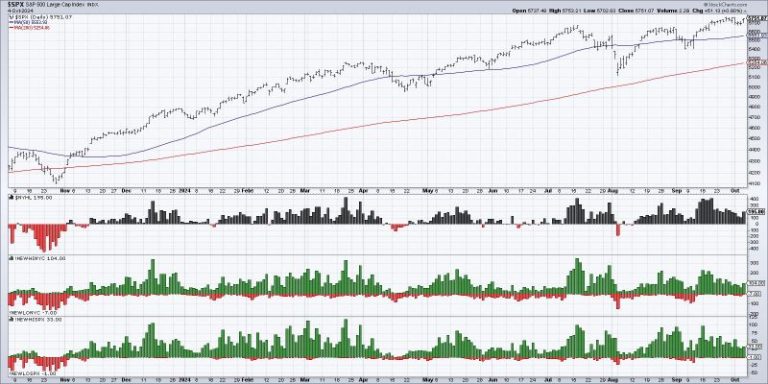In today’s fast-paced and ever-changing financial landscape, market breadth plays a crucial role in understanding the overall health and direction of the stock market. Market breadth refers to the number of individual stocks that are advancing compared to those that are declining within a particular index or market. A market with good breadth indicates that a large number of stocks are participating in the upward movement, signaling a broad-based rally. Conversely, poor market breadth suggests that only a small group of stocks are driving the market higher, potentially foreshadowing a market correction or downturn.
Interpreting market breadth is essential for investors and traders alike as it provides valuable insights into the underlying strength or weakness of the market’s trend. By analyzing market breadth indicators, such as advancing and declining issues, new highs and new lows, and the advance-decline line, market participants can gain a more comprehensive view of market dynamics beyond just looking at the major indices.
One of the key challenges associated with assessing market breadth is distinguishing between a temporary divergence and a sustained trend. For instance, a divergence between the major indices, such as the S&P 500 or Nasdaq, and market breadth indicators could be a warning sign of potential market turbulence ahead. However, it’s essential to look for confirmation through multiple breadth indicators and not rely on a single metric to gauge the market’s health accurately.
Market breadth can also offer valuable clues about sector rotation and market sentiment. A market with strong breadth suggests widespread participation across various sectors, indicating a healthy and sustainable market rally. Conversely, if market breadth deteriorates while the major indices continue to rise, it could indicate that the market is becoming increasingly concentrated in a few big-name stocks, potentially leading to a market pullback.
In conclusion, monitoring market breadth is a vital tool for investors to navigate the complex and ever-changing stock market environment successfully. By paying attention to market breadth indicators and understanding their significance, investors can better assess market trends, identify potential risks, and make more informed investment decisions. Remember, while major indices provide a broad overview of market performance, delving deeper into market breadth can provide valuable insights that may help investors stay ahead of the curve and enhance their overall investment strategy.



